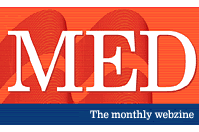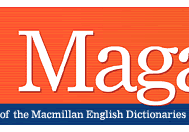
FROM THE EDITOR
 In
this Issue In
this Issue
 Contributors Contributors
 Letters
to the Editor Letters
to the Editor
 Write
to Us Write
to Us
 Spread
the Word Spread
the Word
 Back
Issues Back
Issues
 Index Index
FEATURE
 Crib
notes, copying Crib
notes, copying
and dictionary use
Lindsay Clandfield explores
the difference between
self-teaching and cheating
COLUMNS
 Metaphor Metaphor
What we talk about
when we talk about
honesty and dishonesty
 Focus
on Language Focus
on Language
Study:
Introduction
Collocation
Less fixed combinations
and functional expressions
UK version ¦
US version
 New
word of the month New
word of the month
Proper nouns and new words
 Top Tips for the CD-ROM Top Tips for the CD-ROM
Using MED CD to explore
background information
 onestopenglish.com onestopenglish.com
|
by Lindsay
Clandfield
•
Cheating or self-teaching?
•
What is cheating?
•
Cheating and exams
•
How to eliminate cheating
•
Practical examples
•
Further reading
When a student argues that copying school work off the
Internet isn't cheating, but 'self-teaching', one is tempted to dismiss
this as another example in the time-honoured tradition of lame excuses.
When the head of a group in charge of British qualifications says the
same thing, it makes one sit up and take notice.
'People are open to download essays from the Internet.
They can then change the language and grammar and put in their own words,
but if people are going to that effort they are essentially taking part
in self-teaching; they are learning the subject anyway,' said Dr. Ellie
Johnson Searle, director of the Joint
Council for Qualifications, the body that represents the main exam
boards in the United Kingdom. The comments were made during a BBC radio
interview. You could already hear legions of teachers recoiling in shock
and horror, spilling their tea onto the staff room floor.
top
The above begs the question: what exactly is cheating?
When I asked a series of teachers and students to give me examples of
cheating, the four most popular were:
| • |
copying off a friend |
| • |
copying off prepared notes |
| • |
whispering a question or answer to a friend |
| • |
using a learning aid (calculator, or dictionary
for example) |
top
Most teachers and students immediately associated cheating
with an exam situation.
This is because, of course, exam situations are the bane
of most students' lives. Exam anxiety is not something that people grow
out of either. On a LTCL Diploma course in TESOL that I tutor for in Barcelona,
the majority of teachers — who have spent at least two years teaching
and administrating exams — become incredibly stressed as the final
exam approaches. In response to stressful situations, people develop coping
strategies. Cheating is one of the more negative coping strategies people
resort to in assessment situations.
The whole issue of examining and cheating is an important
one for language teachers. This is because so much of our work is involved
in helping students develop tools to communicate and learn language that
would be thought of as cheating in an exam situation. Working in pairs,
asking a colleague for help, and asking for feedback on errors from the
teacher are all regular features of the modern communicative classroom.
Then there is the whole area of 'learner training' in ELT: making useful
notes, consulting a dictionary, recording language in different ways to
refer back to. Couldn't all these also be what Dr. Johnson Searle would
call 'self-teaching'? And yet all the above would be considered cheating
in most traditional exams.
top
What are language teachers to do to reconcile this difference
between what the teacher lauds as good practice inside and outside the
classroom, but pounces on during a testing situation (arguably more important
in the minds of many students)? There are different options open to the
language teacher:
1 Eliminate all exams
and move to a different form of assessment
This is a progressive and humanistic option, given the shortcomings
of exams and their negative effects in language learning situations.
But what form will the assessment take? Many schools would balk at the
idea of having assessment done any other way, partly because it would
be quite difficult to set up. Exams are also seen as a handy way of
standardising performance.
2
Make exams 'cheat-proof'
This entails reducing the number of questions which have only one possible
answer and making the exam much more personalised to the students. Copying
becomes much more difficult in this case. The difficulty here is that
such exams are quite difficult to mark, especially for the busy teacher.
3 Strictly control exam
situations so that cheating cannot occur
Add more invigilators to the exam room. Grow eyes in the back of your
head. Prowl around the desks like a tiger waiting to pounce on the cheaters.
These are in fact the most popular ways of controlling cheating behaviour.
But they create an atmosphere of tension and conflict, two factors that
the exam situation very stressful for both teachers and learners.
4 Let cheating happen
This is the most revolutionary option, and it brings us back to Dr.
Searle's assertions. First, I should make it clear that this doesn't
mean a 'no rules' approach to exams. That is not what I am suggesting.
Neither, in fact, is Dr. Searle, who said in the same interview that
the penalties for cheating depended on 'the extent of the cheating.
If the plagiarism becomes the substance of the work, in extreme cases,
a pupil would be barred.'
top
I believe that being proactive about cheating, and allowing
it to occur under controlled circumstances, will ultimately help learners
in exam situations. Here are a couple of practical examples of the kind
of cheating I am speaking about.
1 Prepared crib notes
Tell your students that for the next test they will be allowed to make
a crib note, which they can bring into the exam. I often say that each
person is allowed one A4-size piece of paper on which they can write
anything and as much as they like (on one side). The only other rule
is that everything must be in their own handwriting (no photocopies).
To make it more challenging, you could reduce the size of the paper
(half an A4 sheet) or allow them to write on one side only.
2 Dictionary run
Allow students to use a dictionary for the exam. If you think that they
would spend too long with it, then allow a dictionary 'run' during the
exam, in which they can ask you to lend them a dictionary for a period
of three minutes, for example.
I have found that, in my classes, when I incorporate one
or both of the above options into the exam, there are no noticeable differences
in results (meaning that those who would fail before still fail). There
are, however, noticeable differences in attitudes and stress levels before
the exam (i.e. they are lower). The interesting thing about the crib note
is that, in the heat of the exam, many do not use it. They had spent so
long preparing it laboriously that they knew it all off by heart. As for
the dictionary use, I have never seen my students use their dictionaries
so well and so fast. As Dr. Searle said, 'they are learning it anyway'.
And that's the whole point of teaching, isn't it?
top
For a BBC article about copying and self-teaching, see
this website:
http://news.bbc.co.uk/1/hi/education/3598161.stm
Another similar essay on cheating and cooperative learning can be found
at: http://www.jnd.org/dn.mss/InDefenseOfCheating.html
You can read a great article by Mario Rinvolucri on the Strange World
of EFL testing at: http://www.longman.com/longman_turkey/university/yourarticlesnew.html
A summary of learner training and learner autonomy can be found on this
site:
http://iteslj.org/Techniques/McCarthy-Autonomy.html
You can read an earlier short article which includes some of the ideas
presented above in 'You Cheat' by Lindsay Clandfield (English Teaching
Professional, April 2003).
top
|





